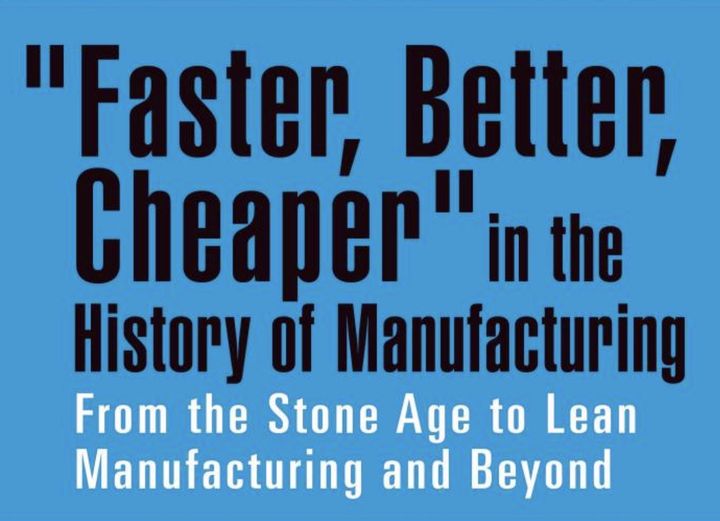
This week’s selection is “Faster, Better, Cheaper in the History of Manufacturing: From the Stone Age to Lean Manufacturing and Beyond” by Christoph Roser.
Most readers of this publication are involved in manufacturing, in one way or another. But did you know that manufacturing has a history almost as long as the entire human species? People have been making things for eons, and you’re at the most current state.
There is a long history of manufacturing, and this book covers it all, from its timeless beginning to the current day and even beyond.
The book begins by explaining the very first manufacturing discoveries made by humans: techniques such as cutting, joining, coating, casting and forming. But from there it takes us through a more detailed sequence that covers the major developments throughout history.
From the Bronze Age to the Classic Ages, from the Middle Ages to the Industrial Revolution, the techniques of manufacturing and practices are explored in detail.
The impact of technology on manufacturing (and society) is examined, including the advent of steam power, mechanization, and transformation into industrial economies.
Finally, the latter sections of the book explore “modern” (meaning not ancient or historical) manufacturing developments. These include the introduction of electricity and electric motors, assembly lines and more advanced materials.
A significant portion is spent discussing the rise of the automotive industry, as well as post-WWII consumer technologies. An interesting section reviews the manufacturing potential of communist societies, and why they, in the end, failed.
The emergence of advanced metrics and planning is reviewed, as the book discusses topics such as Toyota’s pioneering efforts and the use of Lean Manufacturing concepts, which are frequently used in many of today’s major manufacturing operations.
A final section discusses the future, including “three dimensional printing”. Of course, readers will know that it isn’t really the future; it’s here now — it’s just that not everyone realizes it yet.
The reason I feel this book is important is that by reading it from beginning to end you will gain a deep appreciation for the manufacturing world you live in today. It’s a continuous thread, leading from those humans millennia ago optimizing the making of stone tools to today’s wizards puzzling over robotic assembly procedures.
You’re part of that sequence, whether you realize it or not. And by knowing that history, you’re in a better position to see the way forward.
Via Amazon
